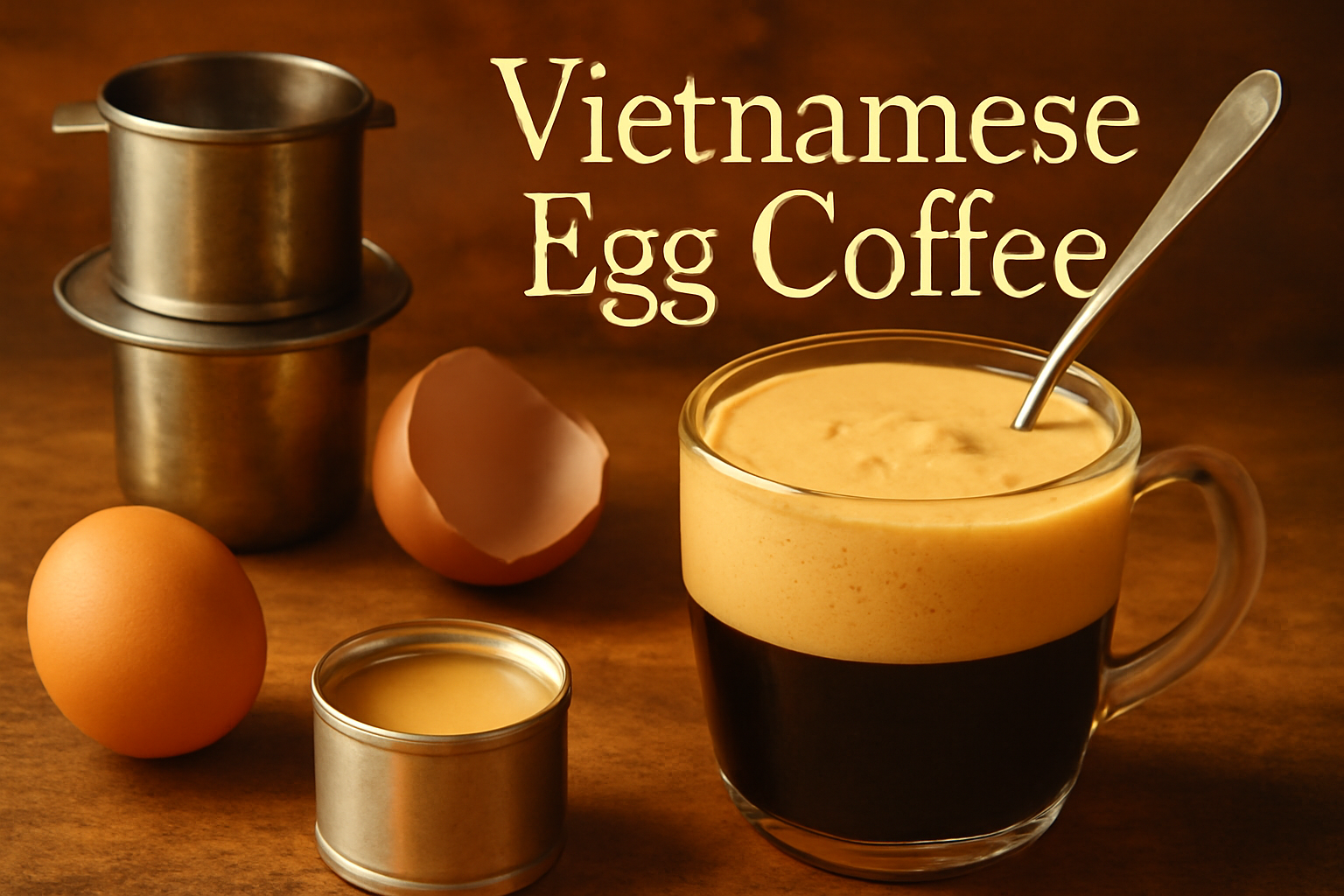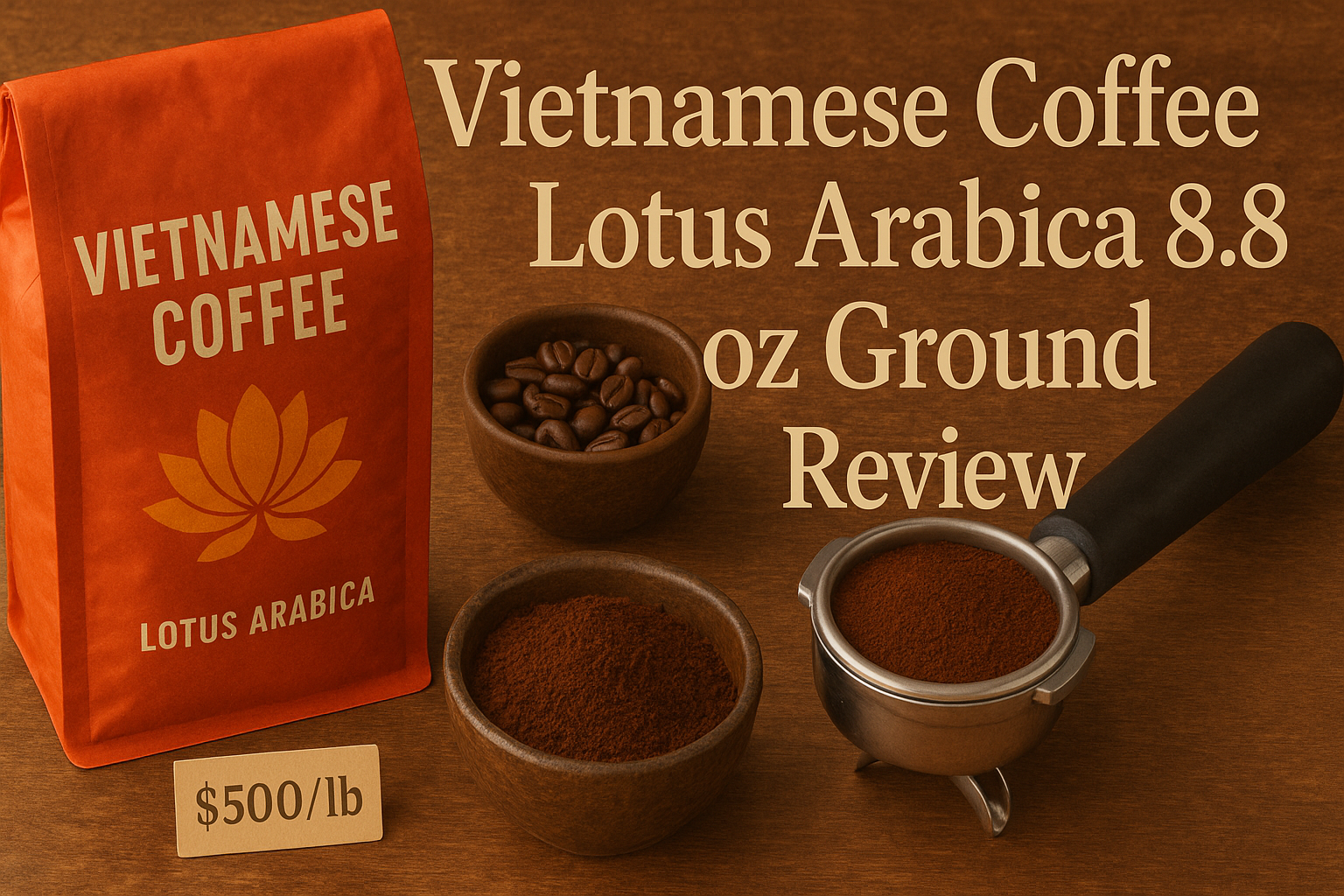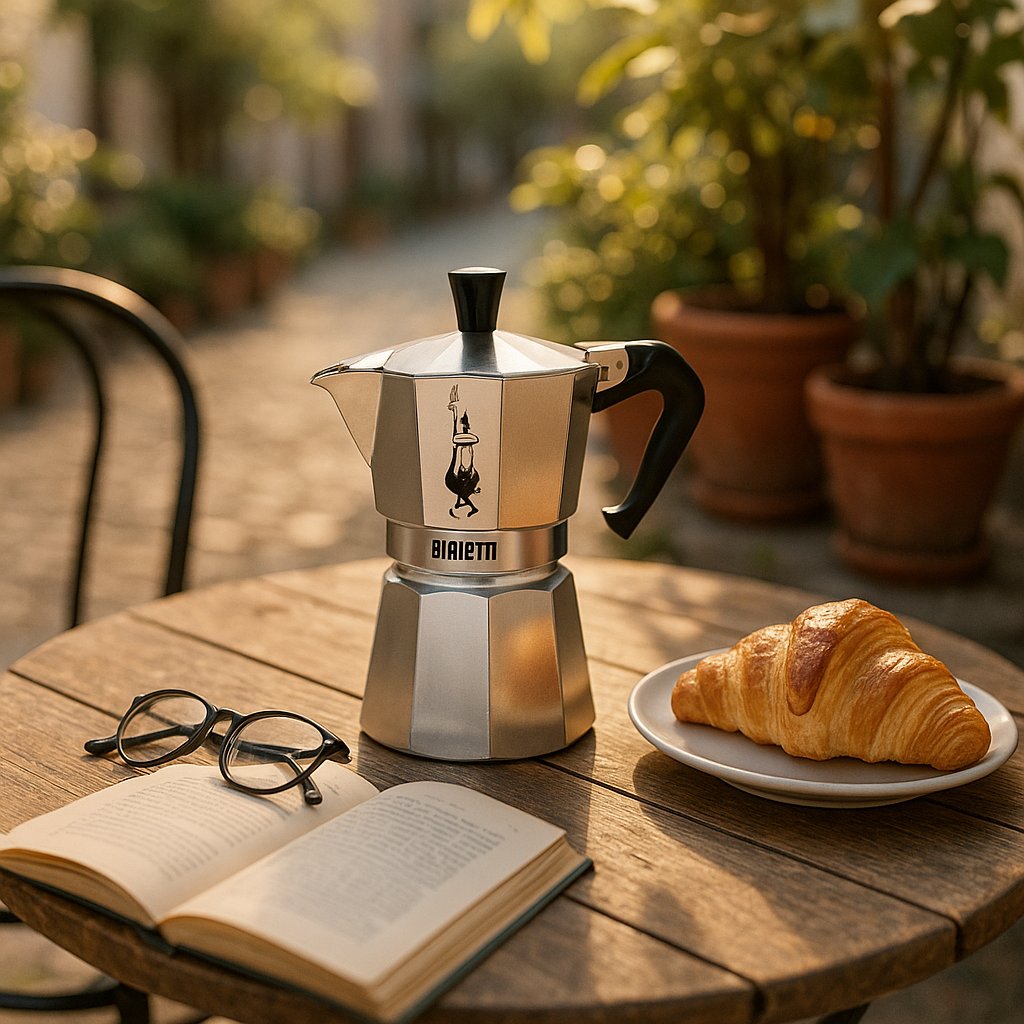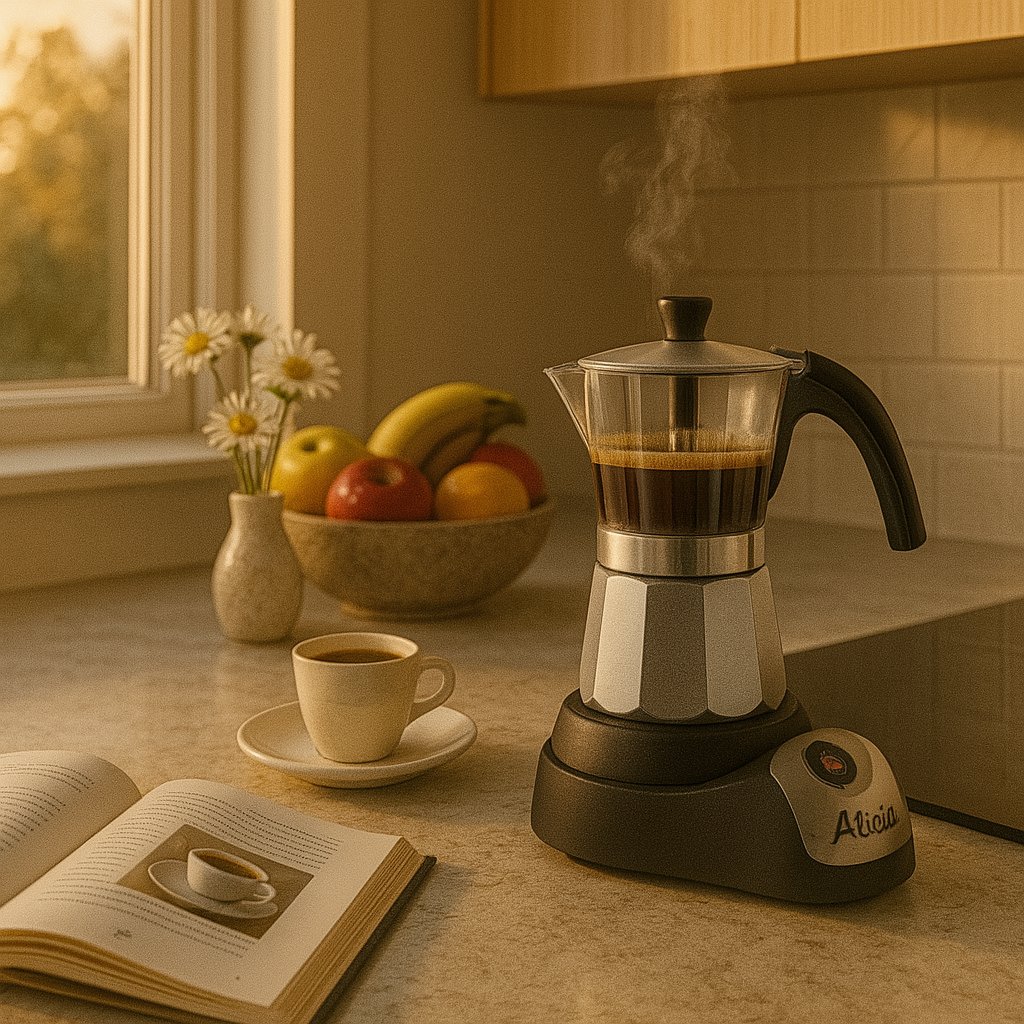5 Must-Try Vietnamese Coffees
Discover the essential Vietnamese coffee experiences with Marco's expert guide. From traditional cà phê sữa đá to innovative egg coffee, explore the rich diversity of Vietnamese coffee culture.

Introduction: My Vietnamese Coffee Odyssey
My first taste of authentic Vietnamese coffee came not in a trendy café or specialty roastery, but from a tiny plastic stool on a bustling street corner in Ho Chi Minh City. As I watched the dark, aromatic coffee slowly drip through the traditional phin filter into a glass already sweetened with condensed milk, I knew I was experiencing something extraordinary. That moment began a years-long journey through Vietnam's diverse coffee landscape that has taken me from the highlands of Dalat to the historic cafés of Hanoi.
Vietnamese coffee culture is far more complex and nuanced than most people realize. While many know the iconic iced coffee with condensed milk, Vietnam's coffee scene encompasses a remarkable variety of preparations, each reflecting different regions, traditions, and innovations. Through countless cups, conversations with local roasters, and immersion in Vietnamese coffee culture, I've identified five essential coffee experiences that every coffee enthusiast must try to truly understand Vietnamese coffee.
These five coffees represent different aspects of Vietnamese coffee culture: traditional preparation methods, regional specialties, cultural significance, and modern innovations. Each tells a story about Vietnam's relationship with coffee, from French colonial influences to indigenous creativity. Whether you're planning a trip to Vietnam or want to recreate these experiences at home, this guide will give you the knowledge and appreciation needed to truly savor Vietnamese coffee culture.
Your Vietnamese Coffee Journey
Vietnamese coffee culture varies dramatically by region, time of day, and social context. These five selections represent a comprehensive introduction to the breadth and depth of Vietnamese coffee traditions, from the most traditional to the most innovative.
1. Cà Phê Sữa Đá (Traditional Vietnamese Iced Coffee)
The Foundation of Vietnamese Coffee Culture
Cà phê sữa đá is not just a drink—it's the cornerstone of Vietnamese coffee culture. This iconic preparation combines strong robusta coffee with sweetened condensed milk over ice, creating a perfect balance of bitter, sweet, and refreshing elements that defines Vietnamese coffee for millions around the world.
Historical Background:
Introduced during the French colonial period when fresh milk was scarce and expensive, Vietnamese coffee makers adapted by using sweetened condensed milk. This practical solution became a cultural institution, creating a flavor profile uniquely Vietnamese.
Essential Characteristics:
- Coffee Base: Dark roasted Vietnamese robusta, coarsely ground
- Brewing Method: Traditional aluminum phin filter
- Sweetener: Sweetened condensed milk (2-3 tablespoons)
- Temperature: Served over ice for immediate refreshment
- Ratio: 20g coffee, 200ml water, 30ml condensed milk
Marco's Tasting Notes
The first sip delivers an immediate contrast—the initial sweetness of condensed milk gives way to the robust, earthy bitterness of Vietnamese robusta. The ice provides essential relief from Vietnam's tropical heat while creating a gradual dilution that reveals different flavor layers as you drink. The mouthfeel is rich and creamy, with a lingering coffee aftertaste that invites the next sip.
Cultural Context
In Vietnam, cà phê sữa đá is consumed throughout the day, often accompanied by conversation with friends or colleagues. The slow brewing process encourages patience and social interaction, making coffee time a deliberate break from daily activities.
Where to Experience the Best
Ho Chi Minh City: Street-side vendors throughout District 1, particularly near Ben Thanh Market, serve exceptional versions. Look for vendors with the longest lines of locals.
Hanoi: The Old Quarter's traditional coffee shops maintain authentic preparation methods passed down through generations.
At Home: Source authentic Vietnamese coffee (Trung Nguyên, Highlands Coffee) and invest in a quality phin filter for the most authentic experience.
2. Cà Phê Trứng (Vietnamese Egg Coffee)
The Luxurious Innovation
Born from necessity in 1946 Hanoi, cà phê trứng represents Vietnamese coffee innovation at its finest. This remarkable drink transforms simple ingredients into a luxurious experience that challenges every preconception about coffee preparation.
The Origin Story:
Created by Nguyen Van Giang at Giang Café during a milk shortage, this drink substitutes whipped egg yolk with sugar and condensed milk to create a creamy, cloud-like topping that floats on strong Vietnamese coffee.
Preparation Technique:
- Egg Cream: 2 fresh egg yolks + 2 tbsp condensed milk + 1 tbsp sugar
- Whipping Time: 8-10 minutes until fluffy and tripled in volume
- Coffee Base: Strong Vietnamese coffee brewed at double concentration
- Assembly: Gently float egg cream on top of hot coffee
- Serving: Often presented in a bowl of hot water to maintain temperature
The Flavor Experience
Cà phê trứng offers a completely unique sensory experience. The initial sips reveal sweet, custardy richness from the egg cream, gradually giving way to the bold coffee beneath. The temperature contrast—hot coffee with cooler egg cream—creates different flavor notes with each sip. As you drink, the cream slowly incorporates into the coffee, creating an evolving taste profile that ranges from dessert-like sweetness to robust coffee intensity.
Expert Preparation Tip
The key to perfect egg coffee lies in the whipping technique. The egg cream should hold soft peaks and be light enough to float on the coffee surface while thick enough to maintain distinct layers. Room temperature eggs whip more easily and create better texture.
Essential Experience Locations
Giang Café (Hanoi): The original location where egg coffee was invented, still run by the Nguyen family. The narrow alleyway location adds to the authentic experience.
Café Dinh (Hanoi): Another legendary Hanoi establishment with their own variation of the recipe.
Modern Interpretations: Many contemporary Vietnamese cafés now offer iced versions and creative variations with different flavors.
3. Cà Phê Cốt Dừa (Vietnamese Coconut Coffee)
Tropical Innovation
Representing the innovative spirit of southern Vietnamese coffee culture, cà phê cốt dừa combines two of Vietnam's most beloved ingredients: robust coffee and rich coconut cream. This tropical twist creates a uniquely Vietnamese interpretation of creamy coffee drinks.
Regional Significance:
Popular in the Mekong Delta region where coconuts are abundant, this drink reflects southern Vietnam's tropical abundance and creative approach to traditional coffee preparation. It's particularly popular during hot afternoons as a refreshing alternative to traditional preparations.
Preparation Variations:
- Traditional Method: Fresh coconut cream mixed with condensed milk
- Modern Version: Coconut milk and coconut cream combination
- Coffee Base: Medium-strong Vietnamese robusta or arabica blend
- Garnish: Toasted coconut flakes or fresh coconut shavings
- Serving Style: Hot or iced, often in tall glasses
Flavor Profile Analysis
Vietnamese coconut coffee offers a distinctly tropical experience that balances the earthy robustness of Vietnamese coffee with the natural sweetness and richness of coconut. The coconut doesn't mask the coffee but rather complements it, creating a harmonious blend where both flavors remain distinct yet integrated. The texture is silky and luxurious, with a subtle coconut aftertaste that lingers pleasantly.
Sensory Experience
Aroma: Rich coffee with subtle coconut sweetness and tropical notes
First Taste: Creamy coconut richness with underlying coffee depth
Mouthfeel: Silky, luxurious texture with natural coconut oils
Finish: Clean coffee finish with lingering coconut sweetness
Cultural Context and Best Experiences
Can Tho (Mekong Delta): Floating market vendors serve fresh versions using coconuts harvested that morning.
Ho Chi Minh City: Modern cafés in Districts 1 and 3 offer sophisticated interpretations with premium coconut products.
Coastal Areas: Beach towns like Vung Tau serve this as the perfect tropical coffee experience.
4. Cà Phê Đen (Vietnamese Black Coffee)
The Pure Vietnamese Experience
For true coffee purists, cà phê đen represents Vietnamese coffee in its most unadulterated form. This preparation showcases the unique characteristics of Vietnamese robusta without any additions, revealing the pure terroir and roasting expertise that defines Vietnamese coffee culture.
The Purist's Perspective:
Vietnamese black coffee allows you to experience the full character of Vietnamese robusta beans—their earthy depth, chocolate undertones, and distinctive body that has made Vietnam the world's second-largest coffee producer. This preparation is favored by serious coffee drinkers and those who want to understand Vietnamese coffee terroir.
Brewing Specifications:
- Coffee-to-Water Ratio: 1:12 for optimal strength and clarity
- Grind Size: Medium-coarse, optimized for phin filter brewing
- Water Temperature: 200°F (93°C) for proper extraction
- Brewing Time: 4-5 minutes total drip time
- Serving: Hot in small cups or over ice for refreshment
Understanding Vietnamese Robusta
Vietnamese robusta beans, primarily grown in the Central Highlands, produce coffee with characteristics distinctly different from the arabica most specialty coffee drinkers know. When properly roasted and brewed, Vietnamese robusta exhibits deep chocolate notes, earthy undertones, and a full body that creates an intensely satisfying coffee experience. The higher caffeine content provides a robust energy boost, while the natural low acidity makes it easier on the stomach.
Traditional Consumption
Vietnamese black coffee is often consumed during contemplative moments—early morning meditation, afternoon breaks, or evening conversations. The intensity requires sipping slowly, encouraging mindful consumption and appreciation of the complex flavors.
Optimal Experience Locations
Dalat Coffee Farms: Highland plantations offer farm-to-cup experiences where you can taste single-origin Vietnamese robusta at its source.
Traditional Coffee Houses: Older establishments in Hanoi and Ho Chi Minh City that have perfected their roasting profiles over decades.
Specialty Roasters: Modern Vietnamese roasters like The Coffee House and Cong Caphe offer premium single-origin black coffee experiences.
5. Cà Phê Sữa Chua (Vietnamese Yogurt Coffee)
Contemporary Vietnamese Creativity
The newest addition to Vietnamese coffee culture, cà phê sữa chua represents the innovative spirit that continues to drive Vietnamese coffee evolution. This unique combination of coffee and yogurt creates a creamy, tangy, and refreshing drink that has captured the imagination of younger Vietnamese coffee drinkers.
Innovation Background:
Emerging in the early 2000s from Hanoi's experimental coffee scene, yogurt coffee reflects Vietnamese willingness to innovate while respecting traditional coffee culture. This drink appeals particularly to younger generations seeking Instagram-worthy beverages that maintain authentic Vietnamese coffee character.
Preparation Method:
- Yogurt Base: Thick, unsweetened Vietnamese yogurt (2-3 tablespoons)
- Coffee Component: Strong Vietnamese coffee, slightly cooled
- Sweetener: Condensed milk or simple syrup to taste
- Assembly: Layer yogurt at bottom, pour coffee gently over
- Presentation: Served with a long spoon for mixing
The Unique Flavor Journey
Vietnamese yogurt coffee offers a completely unique taste experience that challenges conventional coffee expectations. The initial layers provide distinct flavors—tangy yogurt richness followed by robust coffee intensity. When mixed, the combination creates a creamy, complex drink with coffee depth balanced by yogurt's natural acidity and richness. The result is refreshing, satisfying, and unlike any other coffee preparation in the world.
Modern Variations
Contemporary Vietnamese cafés now offer numerous yogurt coffee variations including fruit-infused yogurts, different coffee origins, and artistic presentation styles. Some locations layer multiple yogurt flavors or add fresh fruit components for additional complexity.
Where to Experience Innovation
Hanoi's Trendy Districts: Cafés in Ba Dinh and Hai Ba Trung districts offer the most creative interpretations.
Ho Chi Minh City: District 1's modern coffee shops compete to create the most photogenic and delicious versions.
University Areas: Coffee shops near major universities often feature the most experimental and affordable yogurt coffee options.
Conclusion: Your Vietnamese Coffee Journey
These five essential Vietnamese coffees represent more than just different preparation methods—they tell the story of a coffee culture that has evolved from colonial necessity to global innovation while maintaining its unique identity. From the foundational cà phê sữa đá that introduced the world to Vietnamese coffee, to the creative yogurt coffee that represents contemporary Vietnamese café culture, each drink offers a different window into Vietnam's relationship with coffee.
What makes Vietnamese coffee culture truly special is its inclusivity and adaptability. Whether you prefer the pure intensity of black coffee or the luxurious indulgence of egg coffee, Vietnamese coffee culture has something to offer every palate and preference. The slow brewing process inherent in most Vietnamese coffee preparation encourages patience, conversation, and mindful consumption—values that make Vietnamese coffee culture as much about community and contemplation as about caffeine.
Planning Your Vietnamese Coffee Adventure
Whether you're traveling to Vietnam or recreating these experiences at home, approach each coffee with curiosity and respect for the cultural context. Vietnamese coffee is best enjoyed slowly, in good company, with appreciation for the traditions and innovations that created these remarkable drinks.
As Vietnamese coffee continues to evolve and gain global recognition, these five essential preparations remain the foundation for understanding what makes Vietnamese coffee culture unique. They represent different aspects of Vietnamese society—tradition and innovation, simplicity and complexity, local ingredients and global influences—all united by the common thread of exceptional coffee experiences.
My advice for anyone beginning their Vietnamese coffee journey: start with cà phê sữa đá to understand the fundamental flavor profile, then explore each subsequent coffee to appreciate the creativity and cultural depth that defines Vietnamese coffee culture. Each cup tells a story, and together, these five coffees narrate the remarkable tale of how Vietnam transformed from a coffee colony to a coffee culture that influences the global coffee scene.





